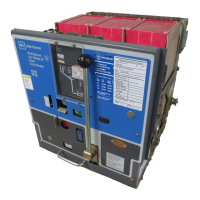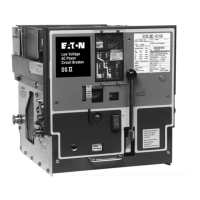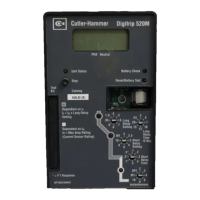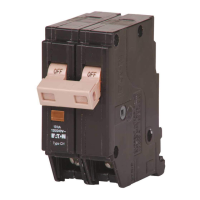Page 54
1.8. 33-790-11
Section 8 - Circuit Breaker Automatic Tripping System
8.0 GENERAL
The circuit breaker is tripped
on
overload and short circuit
conditions by combined action
of
three components:
1.
The sensors which determine the current level.
2.
The Amptector solid-state trip unit which provides a
tripping signal when pre-determined current levels
are reached.
3.
The Actuator which actually trips the circuit breaker.
Schematically this may be represented as shown
in
Fig-
ure 59. This provides a very flexible system covering a
wide range
of
tripping characteristics. Not only is the
+
+
Amptector trip unit adjustable but the sensors are avail-
able over a wide range
of
current ratings.
The automatic overload and short circuit tripping charac-
teristics for a specific breaker rating, as determined by
the sensor rating, are determined by the settings
of
the
Amptector solid-state trip unit. This unit also supplies a
pulse
of
tripping current to the actuator. Thus all tripping
functions are performed
by
secondary control circuitry,
with no mechanical
or
direct magnetic action between the
primary current and the mechanical tripping parts
of
the
breaker.
The Amptector solid-state trip units are available
in
two
basic versions; the Amptector II-A and the Amptector
I-A
+
D D
0 0
D D
0 0
D D
0
0
+
Sensor
Amptector Trip Unit Trip Actuator
Fig. 59 Schematic Illustration
of
Tripping System
AMPT
- Amptector Trip Unit
ACTR
- Actuator
Effective October 1998
Courtesy of NationalSwitchgear.com

